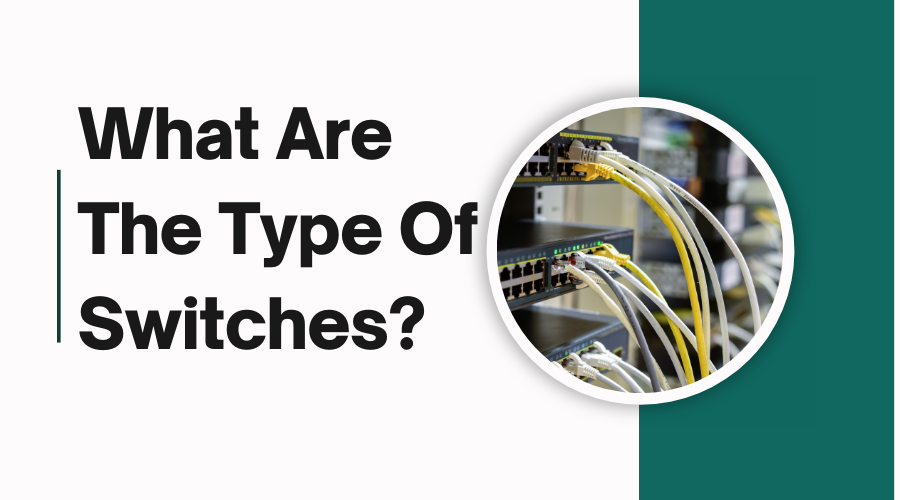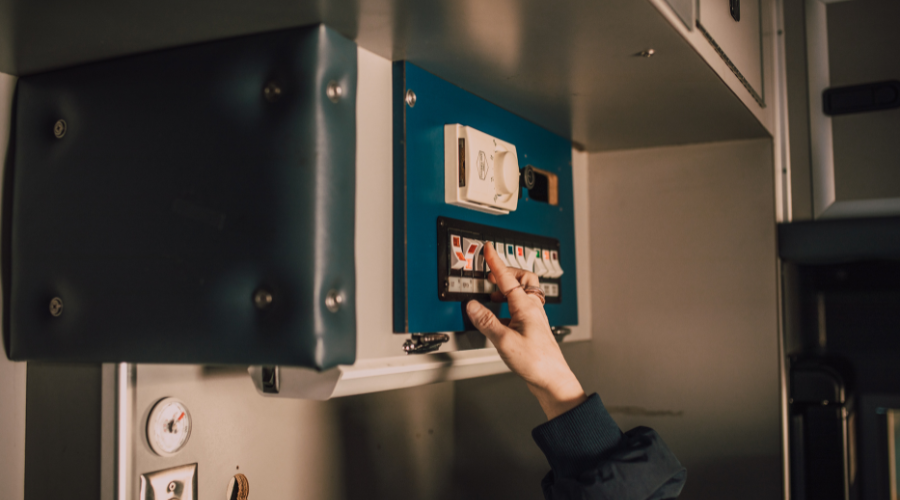


When we look at the basic needs of our lives, they have become many with evolution. One of them is a switch. This switch is of many types, but here, let us highlight its most common type: a simple switch that we use in our homes. This simple switch allows us to play different devices and appliances through it and even charge additional devices like cell phones and laptops.
In electrical or electronic systems, a switch is a device that ceases or lets the flow of electrical current in a device. In simple words, switches are essential devices in almost all electrical or electronic applications.
Switches are not less than a basic need in our daily lives. Their function is to allow us to run or charge devices by turning them on or off. Just like we turn on a switch to operate various devices, we turn off the switch after using them to prevent ourselves from electric shocks. Switches also allow us to connect to the internet by turning them on.
Switches are essential in industrial setups as they enable communication and establish the running of different machinery and equipment.
A switch is an electrical/electronic device that can either cease or make a connection in an electrical circuit, enabling current flow to be permitted or stopped. In a nutshell, a switch acts as a valve that controls the passing of electrical energy to different devices.
A switch enables the flow of electricity by becoming a bridge in an electrical circuit. When the switch is turned off.
The basic job of a switch is to control the flow of electricity by allowing or stopping a path.
An introductory switch generally has five main characteristics outstations, electrical connections, a snap- action medium, and an selector.
Overview of Different Ways Switches Can Be Classified:
Switches can be separated into two categories. They are electronic switches and mechanical switches. Mechanical switches need physical action to work. On the other hand, electronic switches use semi-conductor components. Furthermore, switches can be categorized by pole and throw setup, such as SPST, SPDT, DPST, and DPDT.
Switches can be mainly classified into mechanical and electronic types based on how they operate to control circuit flow. Mechanical switches need manual operation using either a button press or a lever activation to modify circuit conditions. Electronic switches rely on transistors coupled with semiconductor components to operate by electronic signals instead of requiring human intervention.
Switches can be classified depending on their use in several ways. They can be categorized as electronic or mechanical switches or based on their job, such as controlling circuits, monitoring states, or choosing options. Furthermore, network switches are often classified by their duty in network infrastructure, like access, core switches, or accumulation.
Switches can be classified based on the count of poles (circuits controlled) and throws (number of positions a switch is in). Typically, the typical kinds include:
Single Pole Single Throw (SPST)
Single Pole Double Throw (SPDT)
Double Pole Single Throw (DPST)
Double Pole Double Throw (DPDT)

Whether sourcing from a switchgear cabinet supplier or simply curious about your home setup, understanding the different types of switches is essential.
It is an electrical switch run by a lever that is moved to turn a circuit on or off. A common example is a light switch that we turn on and off multiple times throughout the day. Other examples are computers, televisions, and other electronics.
Push button switches are mostly used in industrial machinery and daily life. If we talk about home uses of them, some examples are given below:
Microwave Ovens
Doorbells
Calculators
Telephones
Keyboards
A momentary switch only keeps a connection while someone presses it.
A maintained switch transforms and settles in its new place until and unless it is pressed again. However, you have to press it again to return it to its original state.
A rotary switch represents a category of switch that is operated by rotating a knob, letting it perform various functions. A typical example is a refrigerator. In a refrigerator, there is a rotary switch to control the fridge’s temperature/cooling level.
Multiple Circuits, Commonly Used in Equipment Control Panels
Terminal blocks
Relays
Circuit breakers
Contractors
Slide Switch
A slide switch is that kind of switch that works through sliding to turn on or turn off a circuit. You must have seen slide switches in toys, flashlights, and remote controls.
Slide switches are mostly used in compact electronics such as toys, portable gadgets, cameras, and handheld appliances (such as food factories). The reason why they are used in such electronic items is to maintain their sleek and decent design.
Rocker Switch, Found in power supplies and surge protectors
A rocker switch can be defined as an electrical on/off switch which consists of a spring-loaded rocker. It can be commonly seen in our homes in home appliances such as grinders and mini steamers.
Power Switches
Toggle Switches
Push-Button Switches
Rocker Switches
Rotary Switches
Slide Switches
Limit Switches
Mercury Switches
Pressure Switches
Proximity Switches
Each kind is made for particular functions, making them fundamental for controlling several systems over industries and devices.
As mentioned above, wall switches are common switches that we normally use to turn on and off lights, etc. Electric wall switches are mainly used in our homes and offices. They are mostly used to turn on and off lights, computers, etc.
Limit Switches, used in machinery, detect motion/position
Limit switches are used to recognize the position or movement of devices. They are often used to control machinery. They are seen in several applications, including home appliances and transportation systems.
Proximity Switches, Non-Contact Sensing, Often Used in Automation
Proximity switches are those switches which are invented to capture/recognize the presence or absence of an electronical device or machinery without getting physical contact.
It is a device that senses and answers to pressure changes, usually by turning on or off an electrical circuit when a preset level is met.
Float Switches, Water Level Detection in Tanks
A float switch determines the weightage of a liquid container or a dead body floating on the surface of water.
Thermal Switches, triggered by Temperature, used in Thermal Protection Systems
They are devices that open or close based on temperature variations. They help protect equipment by cutting off the power supply when the temperature goes too high or too low.
A DIP switch is a group of tiny toggle switches in one package used on circuit boards to set or change device settings.
Mercury Switch, Rare, but Still Used in Certain Sensitive Environments
It is an electrical switch that uses mercury to turn on and turn off a circuit.
Membrane Switch: Thin, Flexible Switches Used in Touchpads and Keyboards
It is an electrical switch that applies pressure on a flexible surface, developing or cutting off an electrical connection. They are used in keyboards and touchpads.
Smart Switches, IoT-Enabled, App-Controlled Lighting and Devices
These switches provide functions similar to basic wall switches but offer added features such as remote control, scheduling, etc.
Factors to Consider:
Safety Standards
Reliability
Voltage Ratings
If we talk about home switches, they can normally support 15 amps of current and 120 volts of electricity.
To stay safe from possible electrical shock, make sure to protect your switches and switchboards from moisture, humidity, vibrations, and temperature.
It varies from switch to switch and depends on the frequency of usage.
Safety Standards, Type of Load (resistive, inductive, etc.)
No matter which switches you use, always use them with dry hands. Even one drop of water can kill you, and you only live once, so be very careful.
We have talked briefly about the types of switches in this complete guide and are sure you know everything about them now. Moreover, switches are vital in running our daily and modern lives. Electricity is essential, but without switches, you can not consume it. So now you know the significance of switches and every tiny and big information about them.
What is the most commonly used switch in households?
Traditional/wall switches. Their technical term is SPST switches.
What’s the difference between SPST and SPDT switches?
SPSTs are simple/traditional switches, while SPDTs can switch between two circuits.
Are smart switches compatible with all homes?
No, they are not compatible with all homes.
Which switch is best for industrial automation?
Rotary and rocker switches are best for industrial automation.
What do “pole” and “throw” mean in switches?
“Pole” means the count of individual circuits a particular switch can control, while “throw” means the count of possible output connections for every pole.
The advent of smart grids has changed how electric power is produced, distributed, and consumed.
READ FULLHigh Voltage Switchgear It is a
READ FULLTransformer substations are like the core of our electrical systems. They transfer power to our h
READ FULL